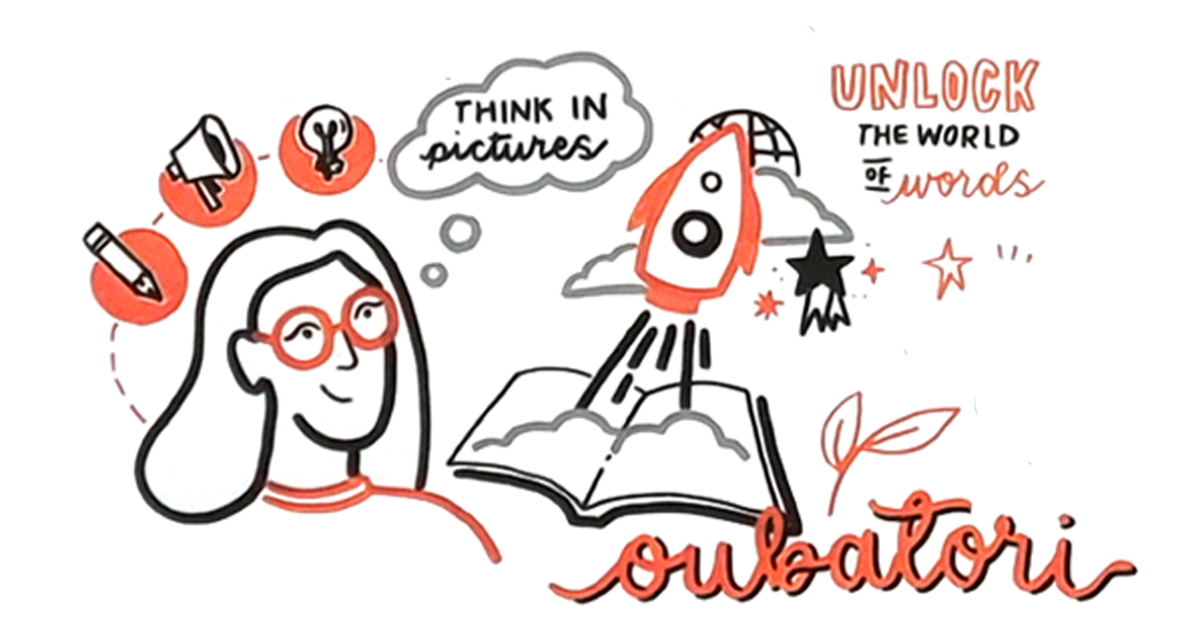22/05/25
Thinking in pictures: Expert tips on visual communication from our podcast guest

Are we missing a trick by not using visual communication more at work? Although a picture says a thousand words, perhaps we are quick to disregard it as a brilliant option for sharing internal comms messages because... it feels too ‘unprofessional’.

We talk to our friends in memes, GIFs and emojis, even some of our closer co-workers on Teams. Sometimes a GIF injects the perfect sprinkle of humour and understanding - it can deeply bond you. And it does all that in the space of three seconds.
Yet, somewhere along the line, humans decided that amalgamating a plethora of words in complex sequences is the epitome of sophisticated communication. *Plot twist – it’s not. Be normal.*
Many of us brand ourselves as ‘not creative’ so we stick to words and numbers.
Contrary to popular belief, ‘creativity’ isn’t something that only some people are gifted at birth. It’s something you need to practise. A muscle you need to exercise.
Understandably, for those of us who don’t practise it regularly, ‘being creative’ can sound daunting. Starting from scratch and not being very ‘good’ – that’s scary.👻 It would be much less uncomfortable not to try - why bother when you’re good at other things? Save yourself the embarrassment.
But by choosing to be curious and take risks, by being less afraid to fail, we can learn so much.
How to build your creativity muscles
We didn’t start out being able to do everything we can now. We built up our skills and knowledge by trying, failing, and trying again.
Sounding out letters to get whole words. Or using words in not quite the right context. Or even using a common saying confidently only to be met with the stark realisation that you had misheard it: tender hooks? Escape goat? Pedal stool?

Are you thinking what I’m thinking?
So, sometimes we might misunderstand words. But what about if different people are imagining the same concept in different ways?
Colleagues might think they have the same shared understanding of a term or strategy or agreed idea, but in fact they’ve assumed different things. Each person might have contrasting understandings and in fact be on totally different pages.

Using pictures, graphics or drawings - anything visual - can sometimes reveal differences in how people have understood something. If one person draws out a diagram of how they’ve conceived something, is that also how someone else visualises it?
Perhaps it’s time to start using images. Sketch out how you understand something, and see if it matches someone else’s version.
4 tips to get you started with visual communication
Visual communication can be used in all sorts of ways to help us remember things, check our understanding, and communicate better.
So, if you’re trying to make your messages resonate, it might be time to start exercising those creative muscles. 🏋🏼But where do we start? How can we cultivate those skills without being an amazing artist? And how might we start thinking about how and when to use them?
Happily, we have some tips from an expert for you!
Hannah Williams of Scribble Inc is a live illustrator, using visual storytelling to capture ideas as people speak at events and workshops.
Hannah says we can all use illustration to help us in our everyday lives. She suggests we try starting small, by embedding these tiny habits:
🍏 Add little icons to your lists - instead of writing ‘apple’ add a drawing of one.
📝 Use borders in your notes and add icons to them.
📩 Need to email someone? Draw a little email icon as a reminder in the border.
✨If somethings important pop it in a box and add a little shadow to it.
Listen to the podcast
If you’re interested in how visual communication can be used to capture and communicate ideas, have a listen to our episode of Speak to the human with Hannah Williams on visual communication.
If you want to develop the skills further, once you’ve got in the practice and built up the reps, you might feel more comfortable broaching more ambitious visuals to help you get your messages across. We go into more detail on the power starting small and embedding habits for change here. And for those moments when you really need to ignite creativity in you we’ve got five tactics for getting the creative juices flowing.
Here's how we’ve used visual communication in some of our learning and communication campaigns:
- Who's too cool for data privacy?😎 Making the dull messages of GDPR meaningful for Condé Nast.
- How do you help colleagues adapt to fast-changing requirements?👟 Bringing learning, communication and neuroscience together for Co-op Funeralcare.
- A campaign embedded in Co-op's values and culture with a sprinkle of surprise and humour.
